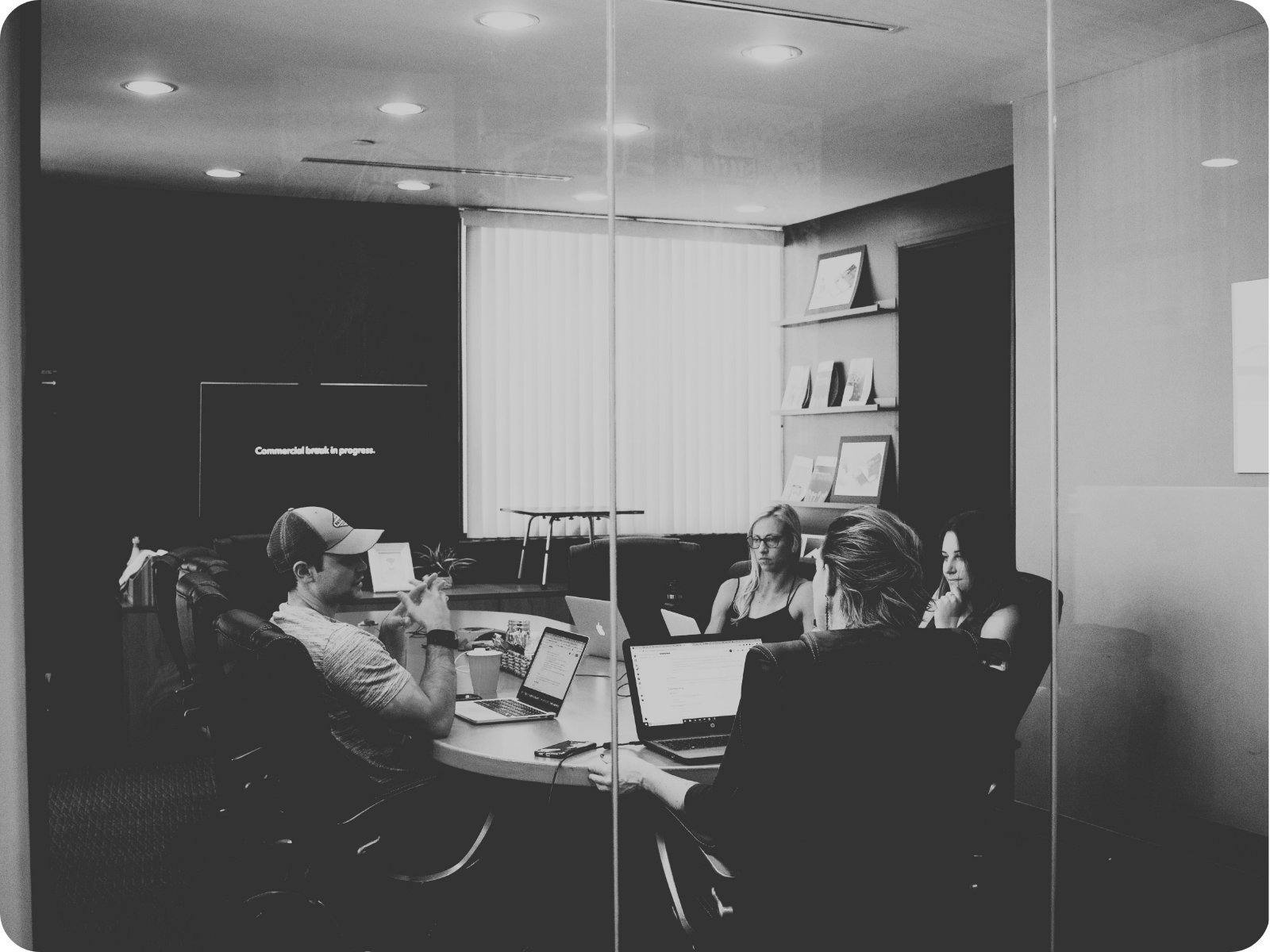Artificial Intelligence (AI) has emerged as a game-changer in numerous industries, and eCommerce is no exception. With its ability to process vast amounts of data, gain insights, and make intelligent decisions, AI is transforming the eCommerce landscape. In this article, we’re taking a closer look at the many ways in which AI has drastically improved eCommerce, highlighting its best use case scenarios and examining how it is reshaping the industry.
Personalization: The Ideal Playground for AI and eCommerce Experiences
Through machine learning algorithms, AI analyzes customer data such as browsing history, purchase behavior, and demographics to generate tailored product recommendations. By understanding individual preferences and needs, online retailers can deliver targeted offers, increasing customer satisfaction and driving sales.
One of the public’s favorite examples in this space is Nike. They’ve managed to employ artificial intelligence in several areas of their business model.
In particular, way back in 2017, Nike introduced a digital shoe design platform called Nike Maker Experience to enable customers to co-create tailored sneakers or sportswear ensembles. Leveraging generative design algorithms, this technology allows users to input various parameters including materials, colors, patterns, etc. Then, it generates unique, visually appealing designs that were difficult to achieve through traditional manufacturing processes. Ultimately, this approach helps Nike meet rising consumer demand for individuality while minimizing inventory risks. Furthermore, Nike incorporates machine learning techniques in their supply chain operations, optimizing production decisions based on real-time consumer behavior analysis and market conditions.
AI Chatbots & Virtual Assistants: The Key to 24/7 Customer Support
AI-powered chatbots and virtual assistants have gained significant traction within the eCommerce industry due to their ability to handle routine tasks, respond quickly to customer inquiries, and improve the shopping process. By employing natural language processing (NLP) and machine learning, these conversational agents can understand, interpret, and react appropriately to user requests in a way that mimics human interaction.
For instance, many online retail platforms now integrate chatbots within their websites, mobile apps, or social media channels to address customer concerns such as order tracking, product suggestions, and returns policies. Companies like Amazon and Walmart deploy AI-based virtual assistant tools like “ChatGPT” and “Juggernaut,” respectively, allowing customers to ask questions, make purchases, or explore recommended items using voice commands or text messages. Additionally, companies like Apple and Samsung implement similar features directly into their virtual home assistance devices (“Siri” and “Bixby,” respectively).
Moreover, AI chatbots and virtual assistants often operate 24/7, which means customers can receive quick answers at any time without having to wait for standard operating hours. This not only improves satisfaction rates but also reduces pressure on live chat or email support staff, giving them more opportunities to focus on complex issues needing manual intervention.
By automating and optimizing basic interactions, AI-driven chatbots help eCommerce brands reduce operational costs, enhance the customer experience, and attract greater loyalty amidst increasing competition. As technology continues advancing, we can expect even more innovative uses for these versatile tools in the future.
AI Streamlining Inventory Management and Demand Forecasting
Accurate inventory management and demand forecasting are critical for eCommerce success. AI algorithms can analyze historical sales data, market trends, and external factors to predict future demand, optimize inventory levels, and reduce stock outs or overstocking. By automating these processes, AI helps businesses streamline operations, minimize costs, and improve overall supply chain efficiency.
Walmart has been leveraging AI and ML to enhance various aspects of its operations, including supply chain management, customer experience, and inventory management. Walmart implemented AI-driven algorithms to optimize supply chain, enabling the company to predict demand patterns and improve the efficiency of its inventory management. By analyzing historical data and real-time information, the algorithms help Walmart optimize stock levels and minimize out-of-stock situations, leading to improved customer satisfaction and increased sales. Additionally, the company is employing AI-powered chatbots to assist customers, addressing inquiries and providing personalized recommendations. These chatbots utilize natural language processing to understand customer queries and offer tailored solutions, enhancing the overall shopping experience.
Walmart’s adoption of AI and ML technologies showcases the potential benefits these innovations can bring to the retail sector. By leveraging advanced algorithms and automation, the company is improving its operational efficiency, customer service, and inventory management, ultimately enhancing its competitive edge in the industry.
The Rise of Visual Search and Product Discovery: how AI is making Shopping Online more interactive
AI-powered visual search technology has transformed the way customers discover products online. By utilizing deep learning algorithms, visual search enables users to search for products using images instead of keywords. This feature enhances the shopping experience, allowing users to find visually similar products, explore new styles, and easily locate desired items. Retailers leveraging visual search have witnessed increased engagement and conversions.
IKEA revolutionized its Place augmented reality (AR) app in 2019 by incorporating visual search capabilities. The app enables users to envision IKEA furniture in their own homes using AR technology. The addition of visual search allows customers to snap photos of furniture pieces and discover similar products from IKEA’s extensive catalog. Chief Digital Officer Gerry Rogers emphasized that IKEA’s focus was on enhancing the customer experience and making home furnishing expertise more accessible through the application of cutting-edge technologies.
ASOS, online fashion retailer, introduced StyleMatch, a native visual search tool, in 2018. This feature empowers users to upload or capture photos and highlight specific clothing items within those images. StyleMatch then retrieves the exact item from ASOS’s catalog or suggests similar alternatives. ASOS’s emphasis on mobile app technology is evident, with a remarkable 83.2% of buyers accessing their catalog through the app in 2021. Former Digital Product Director Andy Berks highlighted the convenience of capturing fleeting moments of inspiration and instantly searching for relevant products using ASOS’s mobile app.
By integrating visual search, companies can offer an additional layer of value to their tech stack, providing customers with a more comprehensive and immersive shopping experience. Moreover, visual search is particularly beneficial for businesses with photo-friendly products and a substantial portion of sales driven by mobile apps.
Can AI help Win the War Against eCommerce Fraud and Fake Reviews?
AI-powered fraud detection and prevention systems have become essential in the eCommerce industry, where the risk of fraudulent activities is significant. These systems leverage machine learning algorithms to analyze extensive transactional data, enabling them to detect patterns and anomalies associated with fraudulent behavior. By doing so, they can identify and flag suspicious activities, protecting businesses and customers from potential fraud in real-time.
One notable example of AI-powered fraud detection in eCommerce is Forter. Forter is a leading fraud prevention platform that utilizes AI and machine learning algorithms to identify fraudulent activities during online transactions. Their system analyzes various data points, such as user behavior, device fingerprinting, and purchase history, to assess the risk level of each transaction. By combining real-time data analysis with historical data and global fraud trends, Forter can accurately identify and prevent fraudulent transactions, providing a secure shopping experience for customers.
Another useful example of how AI and machine learning can be put to good use in eCommerce is combating fake reviews. With a staggering number of 42% out of 720 million Amazon reviews analyzed in 2020 being fake, they clearly have a problem.
Third-party sellers have been exploiting the system by sending free products to customers in exchange for positive reviews, even if the products are of poor quality. These sellers create Facebook groups, Twitter accounts, or Telegram channels to attract users looking for free merchandise, and in return, the users write favorable reviews and receive a small cash bonus. This manipulation of reviews allows unscrupulous sellers to gain an advantage over their competitors and mislead potential buyers.
Amazon has taken legal action against the administrators of more than 11,000 Facebook groups involved in review scams. The company filed a complaint in court, alleging that these groups violate Federal Trade Commission laws that prohibit deceptive endorsements. Amazon aims to identify the individuals behind these groups and shut them down, as the company relies heavily on authentic reviews to determine search rankings for its listed products. While Amazon claims to be using artificial intelligence models and human monitoring to combat fake reviews, the problem persists, and new groups quickly emerge after others are taken down. Some experts suggest that Amazon should also focus on punishing the sellers involved, rather than just deleting reviews, to change the incentives and deter fraudulent activities.
However, fully eliminating the problem may be challenging for Amazon. With millions of reviews posted each week and the platform’s expansion into new sectors, the company may face a dilemma between cracking down on fake reviews and preserving shareholder value. Deleting all fake reviews could potentially lead to a significant loss in shareholder value. Experts warn that as long as there is money to be made through reviews, fraudulent activities will persist alongside the platform’s growth.
Recently acquired by Mozilla, Fakespot is a startup that built a website and browser extension helping users unreliable reviews using an AI and machine learning system to detect patterns and similarities between reviews in order to flag those that are most likely to be deceptive. Fakespot provides a rating or grade for the product’s reviews in order to help consumers make more informed decisions when making a purchase. The goal behind the company’s website and browser extension is to give users the ability to quickly see where deceptive reviews may be artificially inflating a product’s ranking in search engines.
Making Dynamic Pricing and Competitor Analysis Easier and Faster
AI plays a pivotal role in optimizing pricing decisions by leveraging advanced algorithms to analyze various data sources and factors in real-time. This enables businesses to dynamically adjust their prices based on market conditions, competitor pricing, and customer behavior, ultimately maximizing profitability and maintaining a competitive edge.
These technologies can assist in competitor analysis by continuously monitoring competitor prices and product offerings across multiple channels. By collecting and analyzing this data, AI algorithms can provide valuable insights on how competitors are positioning themselves in the market. This enables businesses to make informed pricing decisions, ensuring their prices are competitive while still maximizing profits. AI algorithms can also identify pricing trends and patterns, helping businesses anticipate and respond to changes in the market effectively.
Furthermore, AI can help in dynamic pricing by considering various factors that influence pricing decisions. These factors include supply and demand dynamics, customer segmentation, historical sales data, promotional activities, and external market factors. AI algorithms can analyze these variables in real-time and dynamically adjust prices to optimize revenue and profit margins. By dynamically setting prices, businesses can respond to fluctuations in market demand, inventory levels, or competitor pricing to maintain competitiveness and profitability.
Several eCommerce brands utilize AI for dynamic pricing and competitor analysis. Here are a few examples:
Amazon: Amazon is renowned for its dynamic pricing strategy, leveraging AI algorithms to adjust prices frequently based on competitor prices, customer behavior, and market demand. They dynamically optimize prices for millions of products in real-time, ensuring competitiveness while maximizing profitability.
Uber: Although not an eCommerce brand in the traditional sense, Uber uses AI algorithms for dynamic pricing. Their surge pricing model adjusts fares based on real-time demand and supply conditions, optimizing prices to balance driver availability and rider demand during peak periods.
Booking.com: As a prominent online travel agency, Booking.com employs AI algorithms to dynamically adjust hotel prices based on factors such as location, demand, availability, and competitor prices. This allows them to offer competitive rates while maximizing revenue for both the hotel partners and themselves.
Skyscanner: Skyscanner, a popular flight and hotel comparison website, utilizes AI algorithms to analyze vast amounts of data to provide real-time pricing information. They monitor competitor prices and offer users the best available deals by dynamically adjusting prices based on market conditions.
Supply Chain Optimization on Artificial Steroids
By leveraging advanced algorithms, AI can analyze a multitude of factors and variables to enhance various aspects of the supply chain process. This technology enables businesses to automate and streamline critical operations, resulting in improved efficiency, cost savings, and enhanced customer service.
One area where AI is extensively utilized is inventory management. Traditional inventory management systems often struggle to accurately predict demand and optimize stock levels. AI algorithms, however, can analyze historical sales data, market trends, customer behavior, and external factors such as holidays and promotions to generate more accurate demand forecasts. Companies like Amazon have implemented AI-powered inventory management systems that continuously monitor and adjust stock levels based on real-time demand signals, reducing stockouts and excess inventory.
Another aspect of supply chain optimization where AI excels is in transportation logistics. AI algorithms can analyze data such as transportation costs, delivery schedules, traffic patterns, and even weather conditions to optimize shipping routes and modes of transportation. This optimization leads to reduced transportation costs, shorter delivery times, and improved overall logistics efficiency. For instance, companies like DHL and UPS employ AI algorithms to dynamically optimize their delivery routes, ensuring timely and cost-effective deliveries.
Additionally, AI is also being used for demand sensing and forecasting. By analyzing a wide range of data sources, including social media trends, market research, and customer sentiment, AI algorithms can provide more accurate and real-time demand forecasts. This allows businesses to adjust production, procurement, and inventory levels accordingly, minimizing stockouts and maximizing customer satisfaction. PepsiCo is an example of a company that leverages AI for demand forecasting to optimize its supply chain and improve its production planning.
The role of AI in eCommerce is revolutionizing the industry, empowering businesses to deliver personalized experiences, streamline operations, and enhance customer satisfaction. From personalized recommendations and virtual assistants to visual search and fraud detection, AI is transforming every aspect of online retail. As technology continues to advance, we can expect even more innovative applications of AI, further reshaping the future of eCommerce. Embracing AI-driven solutions will be key for businesses to thrive in an increasingly competitive digital landscape.
Reach out if you’re looking for a partner to help you tech up your AI game and build a strategy that works for your specific needs. You can read more about our expertise in the eCommerce space here.






